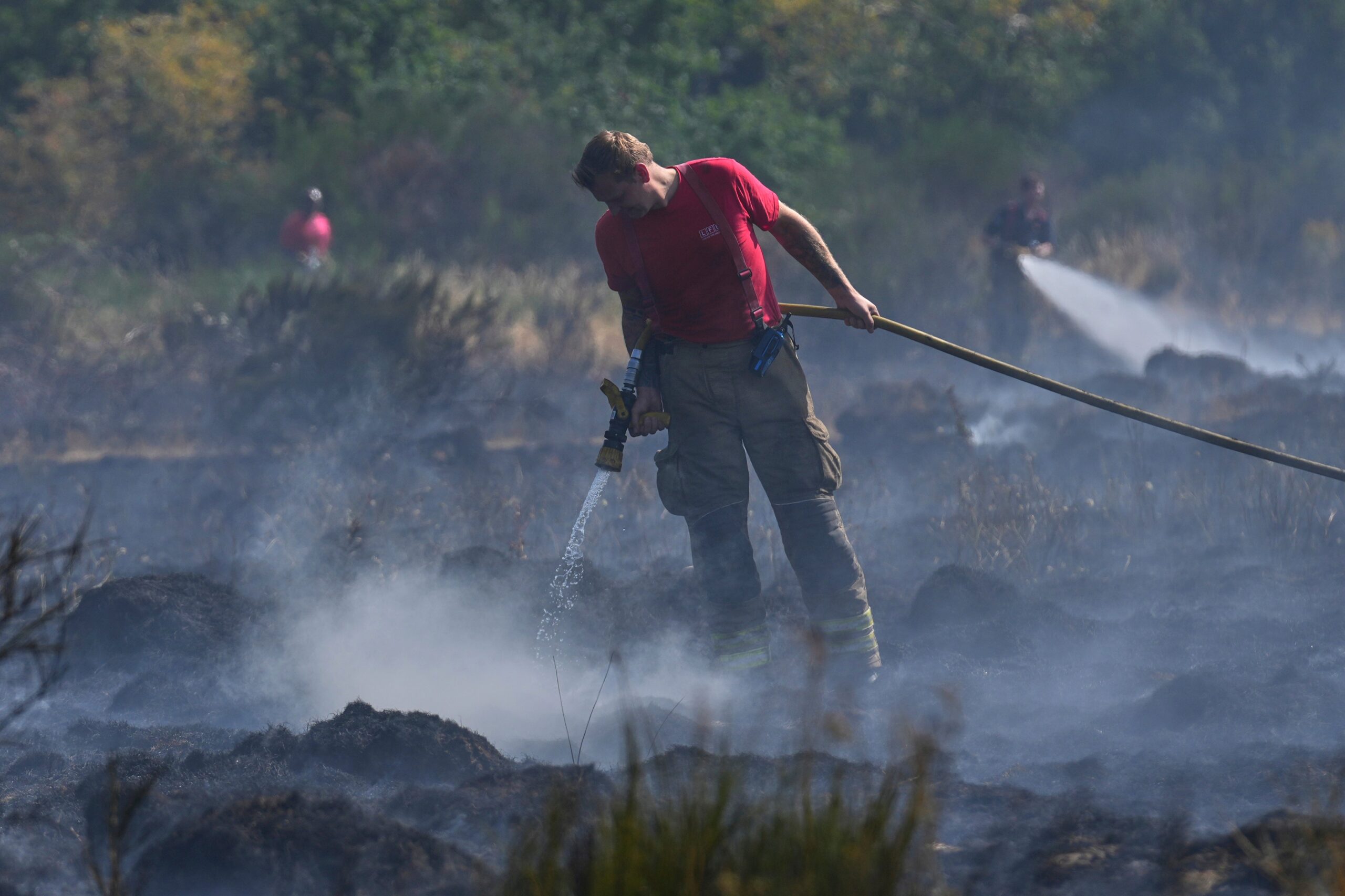Gamekeepers have warned that the government’s rewilding proposals could trigger an increase in wildfires across the UK.
Labour has plans to ban winter burning from over half of England’s peatland. The changes are claimed to help “re-wet” the country’s peat bogs, as well as reduce the chances of wildfires and decrease carbon emissions.
Environmentalists argue that peat bogs must be preserved as they soak up huge amounts of carbon, while landowners and gamekeepers say burning restrictions will, in fact, enable wildfires to break out that will be “too large to fight”.
Winter burning is a controlled traditional upland management technique whereby firebreaks in upland areas are established by creating strips of less flammable foliage. It is used to decrease the amount of fuel for possible wildfires and slow the speed at which blazes can spread.
However, in conservation areas of “deep peat”, of a depth of 40cm or deeper, the burns were banned in 2021, covering 222,000 hectares of land.

The Department for Environment, Food and Rural Affairs (Defra) is now looking into lowering the threshold for “deep peat” to 30cm, which would extend the restrictions to 368,000 hectares. It says wetter peat will decrease the likelihood of wildfires, while gamekeepers argue the plans would leave Britain’s moors and heaths more vulnerable.
Andrew Gilruth, chief executive of the Moorland Association, told The Telegraph: “This is our worst-ever year for wildfires. Britain is burning because of the religion of rewilding.
“It is obvious to everyone bar Natural England that, with climate change making vegetation tinder-dry, increasing this fuel load through rewilding is a really stupid idea. It makes for bigger, more intense blazes which can move at frightening speed.”
“I think the whole thing is very concerning – not just from a loss-of-habitat point of view, but also putting firefighters and land managers in real danger from the inevitable wildfires.
“The whole thing is becoming a massive tinderbox and a bomb that is going off. At the moment, re-wetting is increasing the fuel level on the moors and that is a real concern. Prescribed burning will not stop wildfires, but it reduces the length of flames and allows fires to be contained quicker.”
More proposals include removing an exemption to current restrictions, which would allow burns to continue on “inaccessible” land.

Adrian Blackmore, the director of shooting at the Countryside Alliance, described Defra’s plans as “staggering”.
He told The Telegraph: “They are showing a staggering lack of understanding or knowledge. Burns reduce the fire load, encourage young growth for the birds to eat and encourage the growth of sphagnum moss, which is the peat-forming moss.
“So if you don’t remove the canopy, you can’t encourage sphagnum moss, because it’s not going to grow underneath it. And sphagnum moss is the be-all and end-all, making moors wetter.”
A Defra spokesperson told The Independent: “Our peatlands are home to Britain’s most precious wildlife, while also storing carbon and reducing flooding risk. With 13 per cent of the world’s blanket bog in the UK, we’ve consulted on ways to ensure these rare habitats are better protected. We will set out our response in due course.”
Heatwaves and consistent dry weather have seen the London Fire Brigade tackle more wildfires this summer than in the whole of 2024. A senior firefighter said that crews were experiencing a “busy summer” and that they were working under “very challenging conditions” to bring the blazes under control.
Wildfires have even been raging in Scotland this summer, a place that rarely sees blazes break out. The Scottish Gamekeepers Association warned the fires were limiting the ability of “stretched” firefighters to respond to other emergencies, so they were “becoming a danger to human life”.
Land managers can apply for licences to burn for the purpose of wildfire management, which are regulated and issued by Defra.
The Defra spokesperson said repeated burning risks permanently altering the species composition and hydrology of peatland habitats. They added that peat that is wet is less likely to burn during a wildfire, builds new peat and loses less carbon through oxidation, protecting the stored carbon of old peat and ensuring that the habitat persists.
